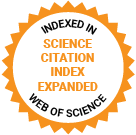Journal of Medical Internet Research
The leading peer-reviewed journal for digital medicine and health and health care in the internet age.
Editor-in-Chief:
Gunther Eysenbach, MD, MPH, FACMI, Founding Editor and Publisher; Adjunct Professor, School of Health Information Science, University of Victoria, Canada
Impact Factor 5.8 CiteScore 14.4
Recent Articles

The number of people with diabetes is on the rise globally. Self-management and health education of patients are the keys to control diabetes. With the development of digital therapies and artificial intelligence, chatbots have the potential to provide health-related information and improve accessibility and effectiveness in the field of patient self-management.

Portable spirometers are increasingly used to measure lung function at home, but doubts about the accuracy of these devices persist. These doubts stand in the way of the digital transition of chronic respiratory disease care, hence there is a need to address the accuracy of home spirometry in routine care across multiple settings and ages.

Clinical diagnostic assessments and the outcome monitoring of patients with depression rely predominantly on interviews by professionals and the use of self-report questionnaires. The ubiquity of smartphones and other personal consumer devices has prompted research into the potential of data collected via these devices to serve as digital behavioral markers for indicating the presence and monitoring of the outcome of depression.

In the United States, racial and ethnic disparities in substance use treatment outcomes are persistent, especially among underrepresented minority (URM) populations. Technology-based interventions (TBIs) for substance use treatment show promise in reducing barriers to evidence-based treatment, yet no studies have described how TBIs may impact racial or ethnic health equity.

Asynchronous digital health (eg, web-based portal, text, and email communication) can overcome practical barriers associated with in-person and remote synchronous (real-time) consultations. However, little is known about the effectiveness and acceptability of asynchronous digital health to support care for individuals with asthma (eg, asthma reviews).

Digital health interventions are a promising method for delivering timely support to underresourced family caregivers. The uptake of digital health interventions among caregivers may be improved by engaging caregivers in participatory design (PD). In recent years, there has been a shift toward conducting PD remotely, which may enable participation by previously hard-to-reach groups. However, little is known regarding how best to facilitate engagement in remote PD among family caregivers.

Patients receiving chemotherapy require ongoing symptom monitoring and management to optimize their outcomes. In recent years, digital remote monitoring interventions have emerged to provide enhanced cancer care delivery experiences to patients and clinicians. However, patient and clinician experiential evaluations of these technologies are rare. Therefore, we explored user experiences and perceptions of one such intervention—Advanced Symptom Management System (ASyMS)—after its scaled deployment in the context of the Electronic Symptom Management System Remote Technology (eSMART) trial. The eSMART trial was a large, multicenter randomized controlled trial to evaluate the efficacy of ASyMS in 12 clinical sites in 5 European countries.

The COVID-19 pandemic and the recent increased interest in generative artificial intelligence (GenAI) highlight the need for interprofessional communities’ collaboration to find solutions to complex problems. A personal narrative experience of one of the authors compels us to reflect on current approaches to learning and knowledge acquisition and use solutions to the challenges posed by GenAI through social learning contexts using connectivism. We recognize the need for constructivism and experiential learning for knowledge acquisition to establish foundational understanding. We explore how connectivist approaches can enhance traditional constructivist paradigms amid rapidly changing learning environments and online communities. Learning in connectivism includes interacting with experts from other disciplines and creating nodes of accurate and accessible information while distinguishing between misinformation and accurate facts. Autonomy, connectedness, diversity, and openness are foundational for learners to thrive in this learning environment. Learning in this environment is not just acquiring new knowledge as individuals but being connected to networks of knowledge, enabling health professionals to stay current and up-to-date. Existing online communities with accessible GenAI solutions allow for the application of connectivist principles for learning and knowledge acquisition.


The integration of digital technologies into health care has significantly enhanced the efficiency and effectiveness of care coordination. Our perspective paper explores the digital information ecosystems in modern care coordination, focusing on the processes of information generation, updating, transmission, and exchange along a patient’s care pathway. We identify several challenges within this ecosystem, including interoperability issues, information silos, hard-to-map patient care journeys, increased workload on health care professionals, coordination and communication gaps, and compliance with privacy regulations. These challenges are often associated with inefficiencies and diminished care quality. We also examine how emerging artificial intelligence (AI) tools have the potential to enhance the management of patient information flow. Specifically, AI can boost interoperability across diverse health systems; optimize and monitor patient care pathways; improve information retrieval and care transitions; humanize health care by integrating patients’ desired outcomes and patient-reported outcome measures; and optimize clinical workflows, resource allocation, and digital tool usability and user experiences. By strategically leveraging AI, health care systems can establish a more robust and responsive digital information ecosystem, improving care coordination and patient outcomes. This perspective underscores the importance of continued research and investment in AI technologies in patient care pathways. We advocate for a thoughtful integration of AI into health care practices to fully realize its potential in revolutionizing care coordination.

Innovative eHealth technologies are becoming increasingly common worldwide, with researchers and policy makers advocating their scale-up within and across health care systems. However, examples of successful scale-up remain extremely rare. Although this issue is widely acknowledged, there is still only a limited understanding of why scaling up eHealth technologies is so challenging. This article aims to contribute to a better understanding of the complexities innovators encounter when attempting to scale up eHealth technologies and their strategies for addressing these complexities. We draw on different theoretical perspectives as well as the findings of an interview-based case study of a prominent remote patient monitoring (RPM) innovation in the Netherlands. Specifically, we create a cross-disciplinary theoretical framework bringing together 3 perspectives on scale-up: a structural perspective (focusing on structural barriers and facilitators), an ecological perspective (focusing on local complexities), and a critical perspective (focusing on mutual adaptation between innovation and setting). We then mobilize these perspectives to analyze how various stakeholders (n=14) experienced efforts to scale up RPM technology. We provide 2 key insights: (1) the complexities and strategies associated with local eHealth scale-up are disconnected from those that actors encounter at a broader level scale-up, and this translates into a simultaneous need for stability and malleability, which catches stakeholders in an impasse, and (2) pre-existing circumstances and associated path dependencies shape the complexities of the local context and facilitate or constrain opportunities for the scale-up of eHealth innovation. The 3 theoretical perspectives used in this article, with their diverging assumptions about innovation scale-up, should be viewed as complementary and highlight different aspects of the complexities perceived as playing an important role. Using these perspectives, we conclude that the level at which scale-up is envisaged and the pre-existing local circumstances (2 factors whose importance is often neglected) contribute to an impasse in the scale-up of eHealth innovation at the broader level of scale.

The project of scaling up noncommunicable disease (NCD) interventions in Southeast Asia aimed to strengthen the prevention and control of hypertension and diabetes, focusing on primary health care and community levels. In Vietnam, health volunteers who were members of the Intergenerational Self-Help Clubs (ISHCs) implemented community-based NCD screening and health promotion activities in communities. The ISHC health volunteers used an app based on District Health Information Software, version 2 (DHIS2) tracker (Society for Health Information Systems Programmes, India) to record details of participants during screening and other health activities.
Preprints Open for Peer-Review
Open Peer Review Period:
-

















